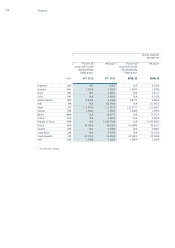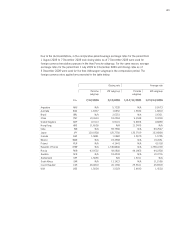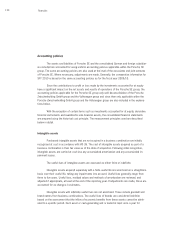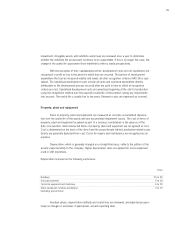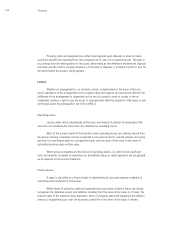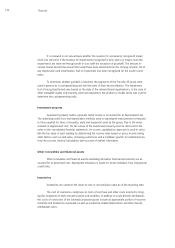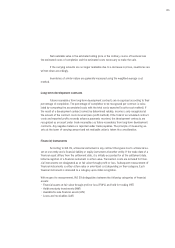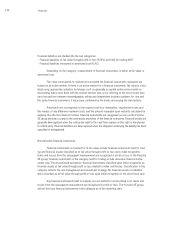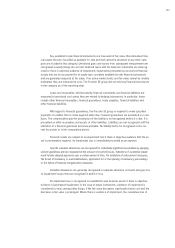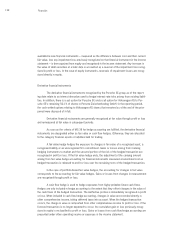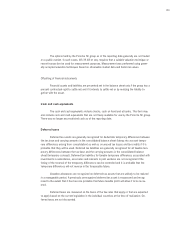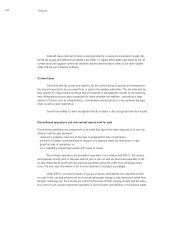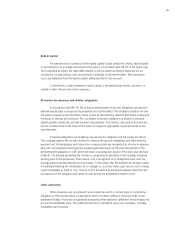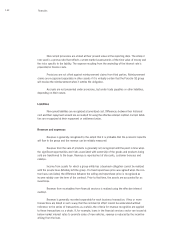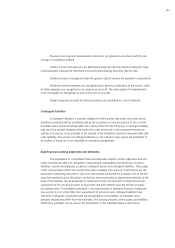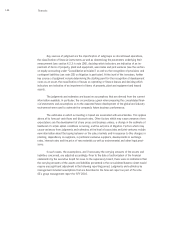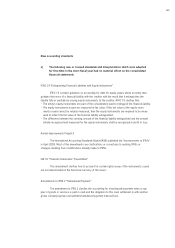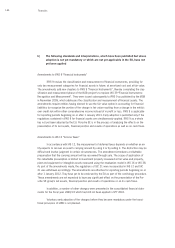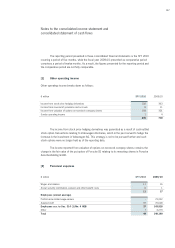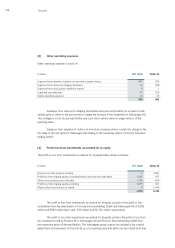Porsche 2010 Annual Report Download - page 160
Download and view the complete annual report
Please find page 160 of the 2010 Porsche annual report below. You can navigate through the pages in the report by either clicking on the pages listed below, or by using the keyword search tool below to find specific information within the annual report.Financials
158
available-for-sale financial instruments – measured as the difference between cost and their current
fair value, less any impairment loss previously recognized on that financial instrument in the income
statement – is derecognized from equity and recognized in the income statement. Any increase in
the value of debt securities at a later date is accounted as a reversal of the impairment loss recog-
nized in profit or loss. In the case of equity instruments, reversals of impairment losses are recog-
nized directly in equity.
Derivative financial instruments
The derivative financial instruments recognized by the Porsche SE group as of the report-
ing date relate to an interest derivative used to hedge interest rate risks arising from existing liabili-
ties. In addition, there is a put option for Porsche SE and a call option for Volkswagen AG to Por-
sche SE’s remaining 50.1% of shares in Porsche Zwischenholding GmbH. In the reporting period,
the cash-settled options relating to Volkswagen AG shares that remained as of the end of the prior
period were disposed of in full.
Derivative financial instruments are generally recognized at fair value through profit or loss
and remeasured at fair value in subsequent periods.
As soon as the criteria of IAS 39 for hedge accounting are fulfilled, the derivative financial
instruments are designated either as fair value or cash flow hedges. Otherwise, they are allocated
to the category financial assets or liabilities held for trading.
A fair value hedge hedges the exposure to changes in fair value of a recognized asset, a
recognized liability or an unrecognized firm commitment. Gains or losses arising from marking
hedging instruments to market and the secured portion of the risk of the hedged transaction are
recognized in profit or loss. If the fair value hedge ends, the adjustment of the carrying amount
arising from fair value hedge accounting for financial instruments measured at amortized cost as
hedged transaction is released to profit or loss over the remaining term of the hedged transaction.
In the case of portfolio-based fair value hedges, the accounting for changes in fair value
corresponds to the accounting for fair value hedges. Gains or losses from changes in measurement
are recognized through profit or loss.
A cash flow hedge is used to hedge exposures from highly probable future cash flows.
Hedges are only included in hedge accounting to the extent that they offset changes in the value of
the cash flows of the hedged transaction. The ineffective portion is immediately recognized in profit
or loss. When included in cash flow hedge accounting, changes in value are recorded directly in
other comprehensive income, taking deferred taxes into account. When the hedged transaction
occurs, the change in value is reclassified from other comprehensive income to profit or loss. If the
forecast transaction is no longer expected to occur, the cumulative gain or loss previously recog-
nized in equity is reclassified to profit or loss. Gains or losses from cash flow hedge accounting are
presented under other operating income or expenses in the income statement.


